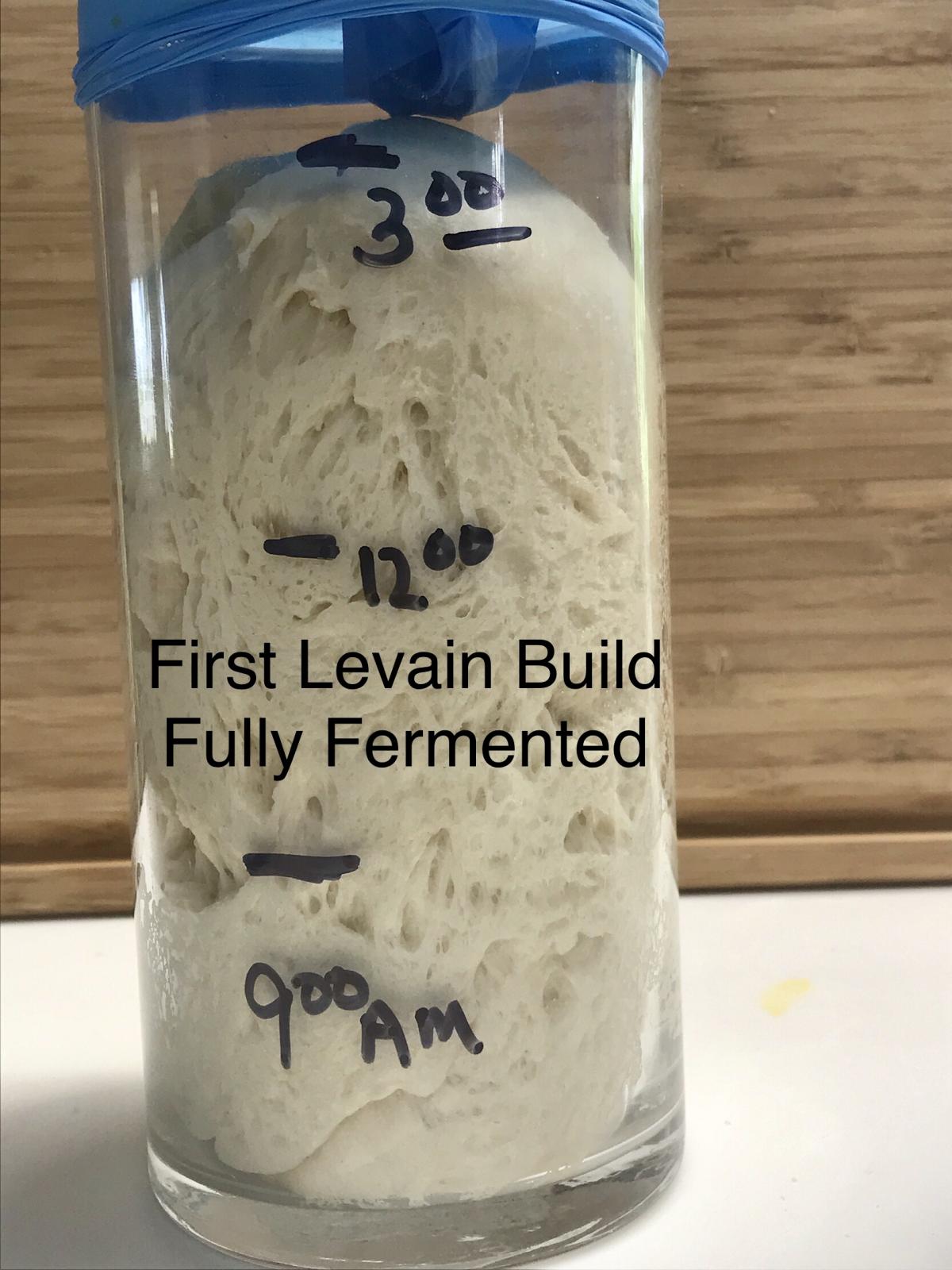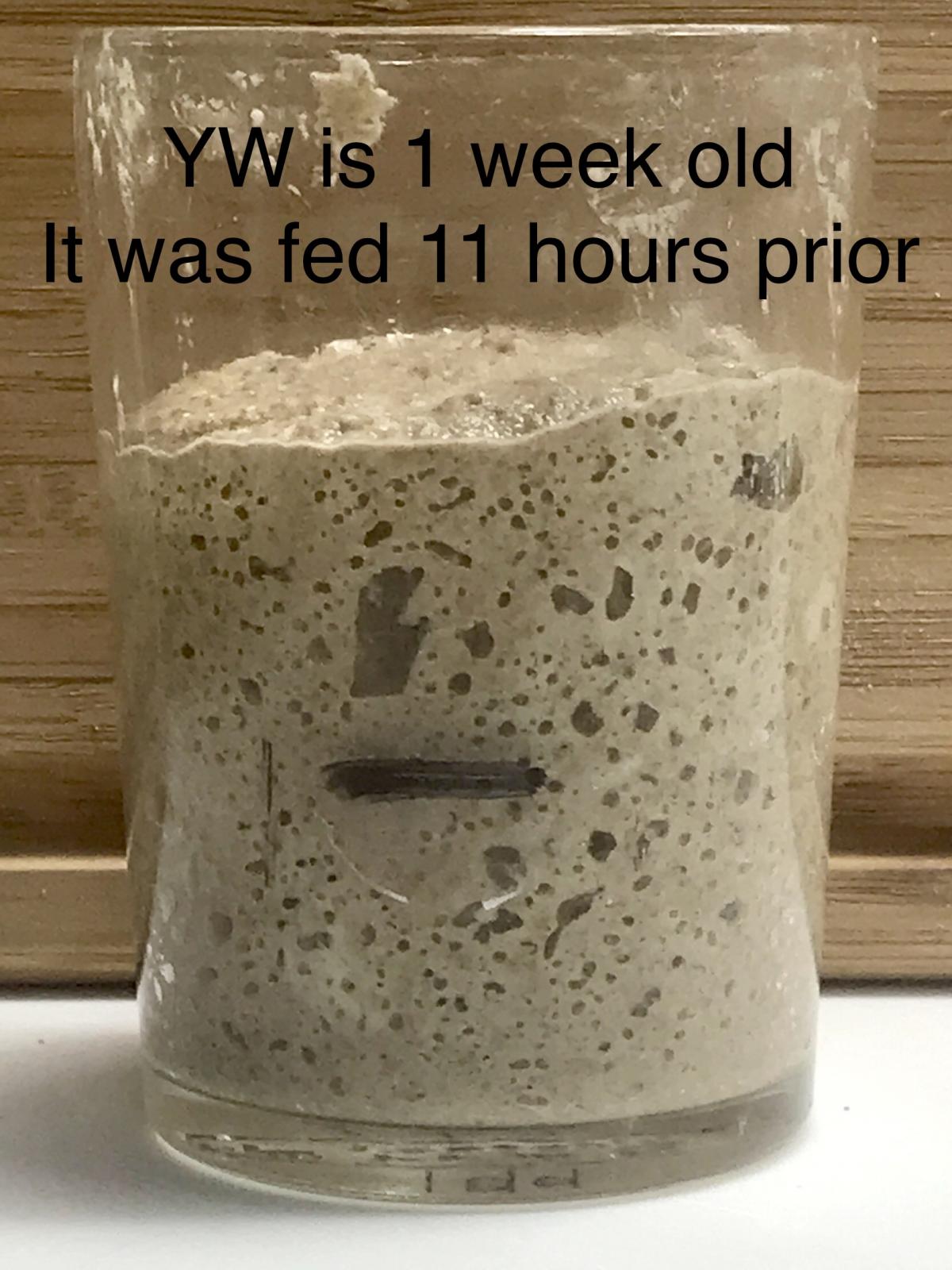Since working with the Swiss Farmhouse bread, I have conducted many YW test. Probably made 5 different YW lately.
I consistently find that the YW bubble much more actively when it just matures. Once a week or so passes since it was initially made the bubbling slows down dramatically. In all cases the fruit (raisins) are still viable.
Even when the fruit is replaced the results remain consistent. They are maintained @ 80-84F.
Not only does the initial YW bubble much more, it raises bread much more energetically.
The first Image below shows the rise over 6 hours of the YW (@ 65% hydration) after the starter was only 2 1/2 days old. The second image shows the same YW (@100% hydration) fermented for 11 hours after it was a week old.


I have consistently observed the identical results with other Raisin Yeast Waters.
I regularly read that bakers keep YW for years and claim they are super active. Any ideas what might be going wrong with mine?
Dan
What is the origin of the yeast? I have never made one. What sugars does it consume once the sugars in the original raisins are depleted? Your photos show some kind of flour in the mix. When is it added and why? After a week or two is it just another sourdough starter? What do you mean when you say that the raisins are still viable?
Debra Winks post may answer some of your questions. I made my first yeast water loaf today and am very pleased with it. I intend to create a new YW each time as it only takes 5-6 days without waste, although if one used a teaspoon of the previous YW into a new batch it can apparently shorten the time frame. My YW was made with kumquats and pure honey as I could not source organic raisins in time.
http://www.thefreshloaf.com/node/60897/raisin-yeast-water
An overview of the recipe can be found at:
http://www.thefreshloaf.com/node/60907/community-bake-hamelmans-swiss-farmhouse-part-2-bake
Cheers,
Gavin.
Doc, in this case the yeast come from the outer surface of organic raisins. The food is derived from the sugar in those raisins.
Initially, a starter is made by fermenting raisins in water. Once the fermentation is active (bubbling) and levain is built using the YW as the liquid and flour for food and gluten.
It is similar to a SD starter, but without the sour flavored LAB.
When I said the raisins are viable, I meant that the raisins had not given up all of their sugar, and was still able to feed the culture.
Doc, you may enjoy yeast water. It is simple to make and imparts some nice characteristics to any non-sour bread. It is a natural way to replace commercial yeast. It seems to me that YW will strengthen a dough much the same way as ascorbic acid. See THIS LINK.
Danny
Thanks Gavin - I have and will continue to study Debra’s post. I totally trust any5hing she writes.
Many bakers participating in the Swiss Farmhouse CB said that their first levain build was sluggish and slow, but the second build speed up drastically.
Below are images of an experiment just conducted. Both levains were fermented under identical conditions and temperatures. The first build was fed whole rye, the second was fed All Purpose. Notice how slow the first build was compared to the second build. Can someone explain why this is so?
It is interesting that the images directly above are of a YW that was made a week ago. If that same YW would have been used when the YW was only 2 1/2 days old, the initial rise would have been much more active and fast. See the first post for a visual comparison.
Dan